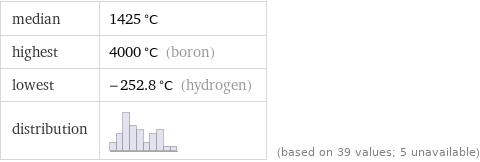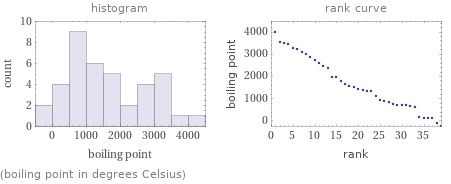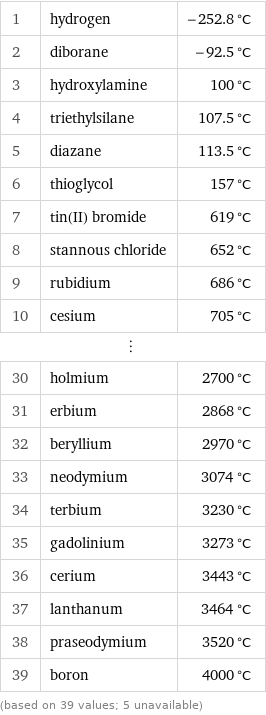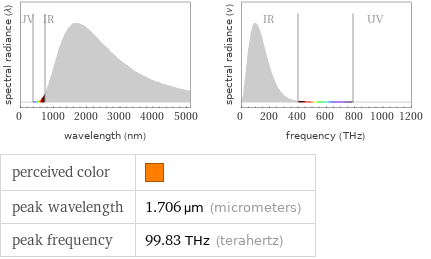Input interpretation

reductants | boiling point
Summary

median | 1425 °C highest | 4000 °C (boron) lowest | -252.8 °C (hydrogen) distribution | | (based on 39 values; 5 unavailable)
Entities with missing values

lithium borohydride | sodium borohydride | diisobutylaluminum hydride | tin(II) sulfide | samarium(II) iodide (total: 5)
Distribution plots

(boiling point in degrees Celsius)
Boiling point rankings

1 | hydrogen | -252.8 °C 2 | diborane | -92.5 °C 3 | hydroxylamine | 100 °C 4 | triethylsilane | 107.5 °C 5 | diazane | 113.5 °C 6 | thioglycol | 157 °C 7 | tin(II) bromide | 619 °C 8 | stannous chloride | 652 °C 9 | rubidium | 686 °C 10 | cesium | 705 °C ⋮ | | 30 | holmium | 2700 °C 31 | erbium | 2868 °C 32 | beryllium | 2970 °C 33 | neodymium | 3074 °C 34 | terbium | 3230 °C 35 | gadolinium | 3273 °C 36 | cerium | 3443 °C 37 | lanthanum | 3464 °C 38 | praseodymium | 3520 °C 39 | boron | 4000 °C (based on 39 values; 5 unavailable)
Unit conversions for median boiling point 1425 °C

1698 K (kelvins)

2597 °F (degrees Fahrenheit)

3057 °R (degrees Rankine)

1140 °Ré (degrees Réaumur)

755.6 °Rø (degrees Rømer)
Comparison for median boiling point 1425 °C

170 °C below temperature of a Bunsen burner flame (1870 K)

113 °C below melting point of iron (1538 °C)

28 °C above temperature in the blue part of a candle flame (1670 K)
Blackbody information for median boiling point 1425 °C (degrees Celsius)

perceived color | peak wavelength | 1.706 µm (micrometers) peak frequency | 99.83 THz (terahertz)
Corresponding quantities

Thermodynamic energy E from E = kT: | 15 ceV (centielectronvolts)

Blackbody energy flux Φ from Φ = σT^4: | 471537 W/m^2 (watts per square meter)

Approximate luminous exitance from a planar blackbody radiator perpendicular to its surface: | 162666 lx (lux)